First World War Project
Arthur PHILPOTT (of Oare)
b. Q3/Q4 1878 Private, Service Number 10772 |
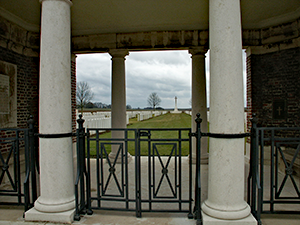
Son of Esther Philpott (née Wright, née Stratford), of Forge House, Church Road, Oare, Faversham, and the late John (James) Philpott. This was the home of her daughter, Sophia, and son-in-law, Alfred Young. It was also from this address that Arthur's mother (his sole legatee after his father died in 1918) paid for an additional inscription on Arthur's gravestone reading "GRANT HIM THINE ETERNAL REST". Esther died in March 1931, registered at Faversham but quite likely living at Oare until the end, not far from the Three Mariners Inn at the centre of this small village.
Arthur was born in nearby Davington, Faversham, Kent. He had three half-siblings (William, Thomas and Sophia Wright).
His father was a lifelong agricultural worker and carter who was later to live out his life in the marital home of his daughter, Sophia, with her husband in Oare.
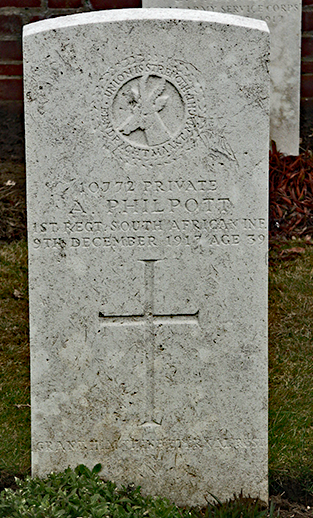 While we don't have military records from the 1st World War (not digitised by South African authorities), we do have earlier records from his time in the 12th (Prince of Wales's) Royal Lancers that reveal something of the man. He stood 5 feet and 9 inches tall, weighing 159 pounds with a chest measurement of 38½ to 40½ inches. His complexion was 'fresh', eyes grey and brown hair. He had a distinguishing white patch on the left side of his head. He was deemed fit. Curiously, Arthur declares his age on enlistment as 21 years and three months - suggesting birth in September/October 1877. However, all other records suggest his birth in 1878.
While we don't have military records from the 1st World War (not digitised by South African authorities), we do have earlier records from his time in the 12th (Prince of Wales's) Royal Lancers that reveal something of the man. He stood 5 feet and 9 inches tall, weighing 159 pounds with a chest measurement of 38½ to 40½ inches. His complexion was 'fresh', eyes grey and brown hair. He had a distinguishing white patch on the left side of his head. He was deemed fit. Curiously, Arthur declares his age on enlistment as 21 years and three months - suggesting birth in September/October 1877. However, all other records suggest his birth in 1878.
We are grateful to South Africa War Graves Project for the headstone images we have used in this Remembrance record and to family researcher, Tony Wright.
Military Experience of Arthur Philpott
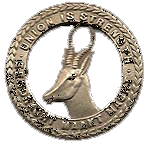 As a young man of 22 years (changed from 21 later in the record) and 3 months, Arthur began his military career when he enlisted at Faversham into the 12th (Prince of Wales's) Royal Lancers on 27th December 1899 (Private, Service Number 4822). He passed his medical the following day at Canterbury and soon moved to Colchester. He was destined to see military service in South Africa and India signing up for seven years and five years in the reserve. Like so many other young men of his generation, Arthur responded to the urgent call for men to replace those lost early in the Boer Wars. His records confirm he served in the South African Campaigns of 1901-2 (Cape Colony, Orange Free State, Transvaal). He was discharged from the 12th Lancers at his own request on 15th October 1912. He chose to stay in South Africa and find a new life there until the outbreak of the First World War redirected him.
As a young man of 22 years (changed from 21 later in the record) and 3 months, Arthur began his military career when he enlisted at Faversham into the 12th (Prince of Wales's) Royal Lancers on 27th December 1899 (Private, Service Number 4822). He passed his medical the following day at Canterbury and soon moved to Colchester. He was destined to see military service in South Africa and India signing up for seven years and five years in the reserve. Like so many other young men of his generation, Arthur responded to the urgent call for men to replace those lost early in the Boer Wars. His records confirm he served in the South African Campaigns of 1901-2 (Cape Colony, Orange Free State, Transvaal). He was discharged from the 12th Lancers at his own request on 15th October 1912. He chose to stay in South Africa and find a new life there until the outbreak of the First World War redirected him.
His Statement of Service shows he was very quickly promoted to Lance Corporal (23rd May 1900) in Reserves but broken down to Private again on 10th September 1900 when he joined the 12th Lancers. He was granted the 1st Good Conduct Badge on 11th February 1904. On 29th September 1904, Arthur was appointed unpaid Lance Corporal, then paid Lance Corporal on 7th May 1906. Finally, Arthur was promoted to Corporal on 13th February 1911 and unpaid Lance Sergeant on 27th March 1912. His education included 2nd and 3rd class certificates (both spellings used Umbala/Ambala).
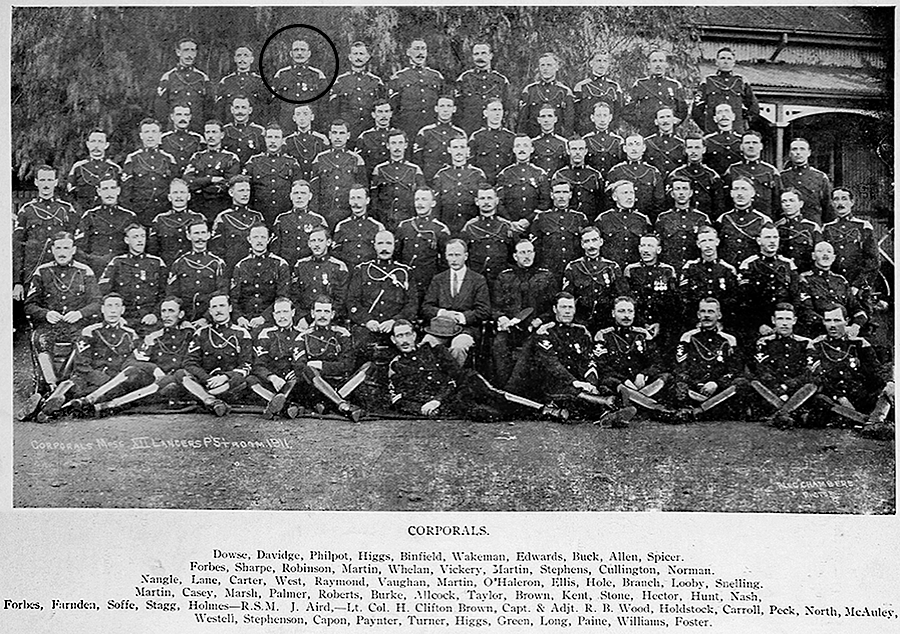
Reproduced here with kind permission of the Regimental Museum of the 9th/12th Royal Lancers
Arthur was at Home between 27th December 1899 to 14th March 1901 before arriving in South Africa on 15th March 1901. From 11th October 1902, Arthur saw service in India until he returned to South Africa on 24th October 1910 until his discharge on 15th October 1912. It does appear that Arthur wanted to establish his new life in South Africa.
This brings us to the First World War, when Arthur re-enlisted, this time with the 1st South African Infantry (Cape of Good Hope Regiment). From his War Gratuity of £3, he enlisted within the preceding 12 months (1917) before his death from wounds received.
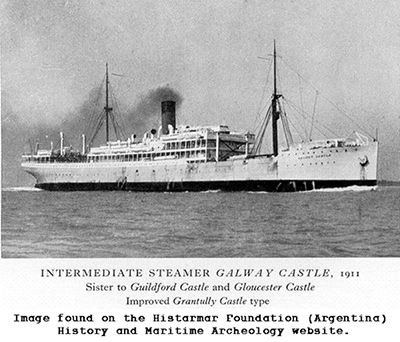 Records show that Arthur was "taken on Depot strength" of South African Infantry on 1st January 1917. At this time, his given age was 32. He embarked at Cape Town aboard H.M.T. "Galway Castle" on 10th March 1917.
Records show that Arthur was "taken on Depot strength" of South African Infantry on 1st January 1917. At this time, his given age was 32. He embarked at Cape Town aboard H.M.T. "Galway Castle" on 10th March 1917.
The 1st South African Regiment came under orders of the 9th (Scottish) Division on the Western Front; part of the 1st South African Infantry Brigade.
Circumstances of the death of Arthur Philpott
During November 1917, the 1st Regiment S.A. was active at OOST DUNKIRK BAINS (Oostduinkerke) and in the line at Nieuwpoort from 9th to 17th November where the Western Front met The Channel.
Once relieved, Arthur's Regiment moved south by stages (march and entrainment) to ERGNY, where the Regiment was reorganised and trained in the art of trench warfare from 26th November to 1st December. This placed Arthur between Cambrai and Péronne.
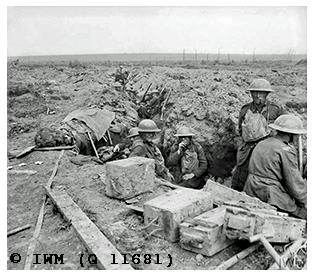 The Regimental Diary gives an idea of the actions faced by Arthur from 1st December until he received his injuries and later died on 9th December 1917. Without medical records to help us be more accurate, Arthur was injured between 6th and 9th December inclusive. These are the only dates when Other Rank injuries were recorded in the FINS area. These records describe how the growing 'air forces' were causing a significant number of the injuries and deaths.
The Regimental Diary gives an idea of the actions faced by Arthur from 1st December until he received his injuries and later died on 9th December 1917. Without medical records to help us be more accurate, Arthur was injured between 6th and 9th December inclusive. These are the only dates when Other Rank injuries were recorded in the FINS area. These records describe how the growing 'air forces' were causing a significant number of the injuries and deaths.
"1st December: ERGNY: The Battalion marched to CREPY.
2nd: The Battalion marched to ANVIN and entrained at 4.15 p.m.
3rd: Detrained at Péronne at 4 a.m. and marched to YORK CAMP, MOISLAINES. One company employed as off-loading party to Brigade group from 10 a.m. 2/12/17 to 7.30 p.m. 3/12/17.
4th: The Battalion marched to FINS and from there proceeded to the line, relieving the 2/Battalion Irish Guards in the support line of the right sub-section of the GOUZEAUCOURT sector. Casualties NIL.
5th: BOUZECOURT: Our artillery was very active from 9.30 a.m. to 10 p.m. Our aircraft was not active. Two flights of fourteen machines passed over our lines travelling N.E. Enemy artillery intermittently fired throughout the 24 hours mostly directed on Gouzecourt where a small ammunition dump was exploded at 3.15 p.m. At 12 midnight 30 small shells fell just short of the right portion of our support line.
One enemy aeroplane flew over our lines at 8 a.m. and a pair came over at 11.30 a.m. and remained flying low for some time. Our anti-aircraft guns opened up in each case. At 5 pm. The 3rd Cav. Brigade reported that a number of enemy were seen in VILLERS-GUISLAIN and rapid rifle fire opened and continued until 7 p.m. This turned out to be an enemy S.A.A. dump which had been blown up. Casualties nil.
6th: GOUZECOURT: Our artillery opened heavy fire at 6.15 a.m. and continued for about half an hour. A flight of ten of our machines passed over the enemy lines at 2.45 p.m. Enemy artillery action throughout the day. Enemy machine guns active throughout the night. Casualties – wounded 3 O.R.s
7th: GOUZECOURT: Our artillery active. Large squadrons of our aeroplanes were continually crossing over the enemy's lines and returning. Enemy artillery very active, dropping shells along our support line and on GOUZECOURT. Casualties: killed 2 O.R.s, wounded 5 O.R.s
8th: GOUZECOURT: The Battalion relieved the 2nd South African Infantry in the front line. At 5.45 a.m. the enemy opened a heavy bombardment on our front line which lasted for an hour. Seven enemy aeroplanes flew over our lines dropping a few small bombs. Casualties: Killed 1 officer, 3 O.R.s; wounded 3 officers 8 O.R.s
9th: GOUZECOURT: Our artillery was fairly active. Two patrols were sent out by the company on the right. It was found to be French concertina wire of an average depth of 5 yards. Enemy artillery was active throughout the day. An enemy patrol was observed on the extreme right of our sector at 1 a.m. Lewis guns opened on it. Casualties: killed 1 O.R., Wounded: 4 O.R.s
10th: GOUZECOURT: Our artillery was fairly active. One of our aeroplanes engaged some enemy machines at 11.30 a.m. one of which was seen to dive down. Patrols went out from the right company during the night and examined a tank some 300 yards in front of our line. They found some bodies. A patrol from the left company located the enemy 2 Ms at 4.30. The patrol brought in one 2M that was loose and later went out with an R.E. party who destroyed the remaining 2 Ms by blowing them up. Enemy artillery fairly active. At 6 p.m. a heavy bombardment was opened up in vicinity of front line and at 10 p.m. he bombarded our right close support Company. Enemy aircraft were extremely active. Between 10 and 10.12 a.m., a squadron of 20 machines flying over our lines dropping five small bombs doing no damage. A great deal of talking was heard from the enemy lines at dusk. Transport could he heard in the vicinity of VILLERS-GUISLAIN. Casualties: wounded 2 O.R.s.
11th: GOUZECOURT: The Battalion was relieved by the 2nd S.A. Infantry and withdrew to the support line. Our artillery was fairly active. Several of our aeroplanes flew over the enemy liens early in the morning. Enemy artillery was unusually quiet. At 7.30 a.m. he shelled the FINS road where it enters GOUZECOURT.
12th: GOUZECOURT: The Regiment was relieved by the 3rd S.A. Infantry and withdrew to hutments on the FINS-GOUZECOURT Road. Our artillery was fairly active. Enemy artillery and M.G.s were also active."
Arthur Philpott was awarded the posthumous Victory and British War Medals. [See Appendix 1]
Family of Arthur Philpott
Acknowledgments
The Society is grateful for the help offered by Tony Wright, the great grandson of William Wright the step-brother of Arthur Philpott. Tony Wright's own research has corrected errors and added significant new family material.
We are also grateful grateful to the South Africa War Graves Project for permission to use the headstone images we have used in this Remembrance record.

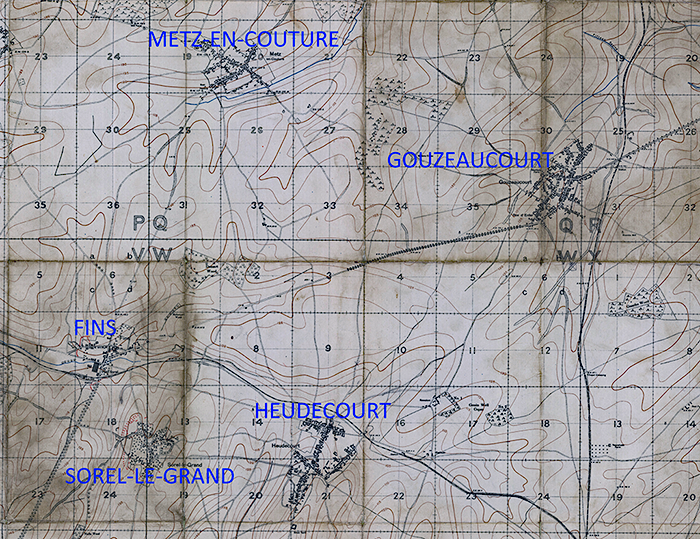
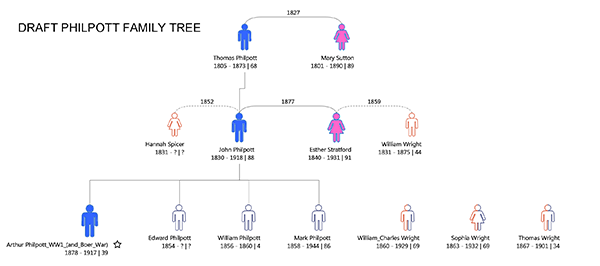
 World War 1 Pages
World War 1 Pages